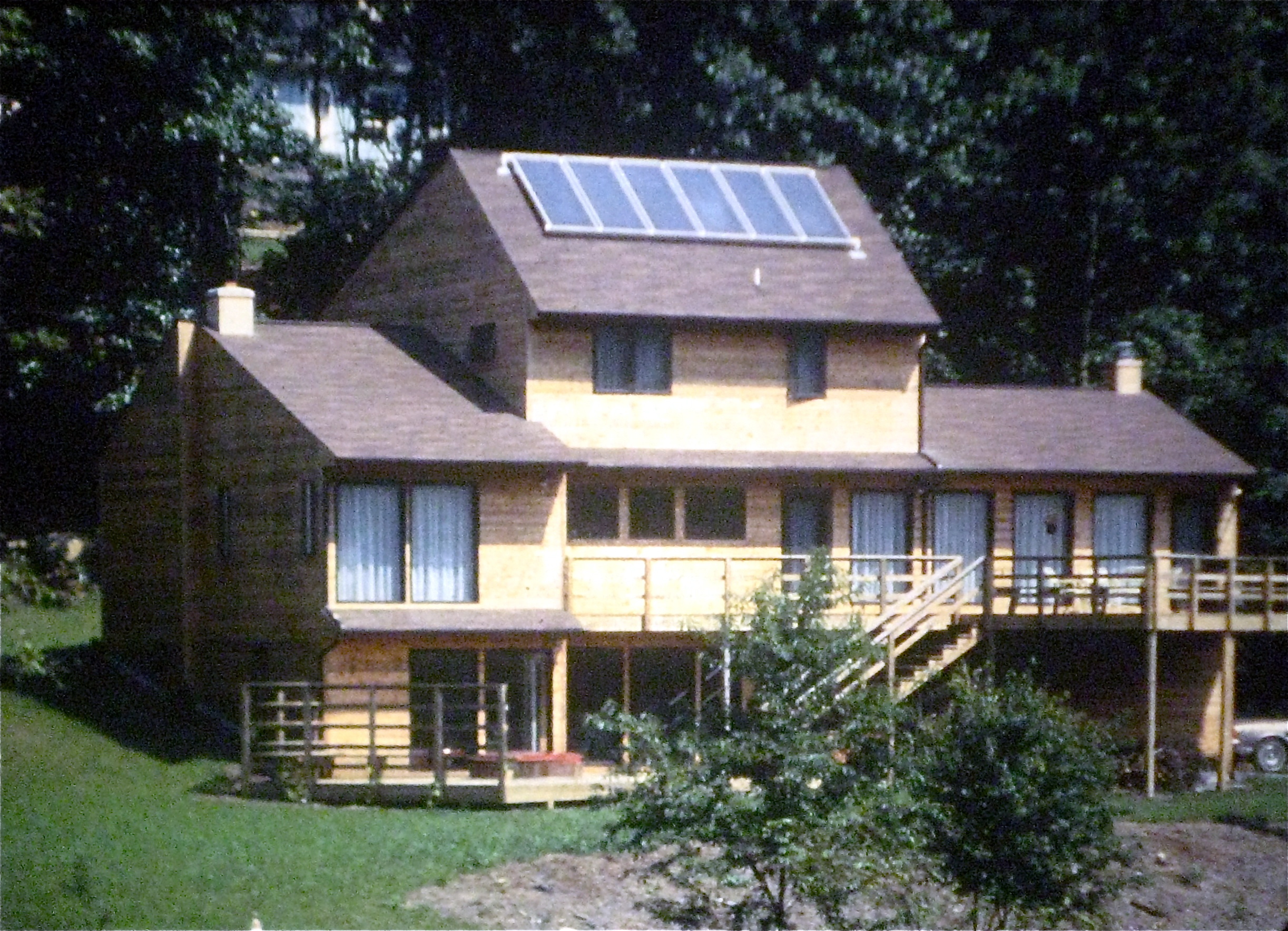Understanding Solar Hot Water Systems – The Drain Back Design
There are many types of solar hot water systems – pressurized closed loop, pressurized open loop, drain back, thermosyphon, and variations called direct and indirect, referring to the placement of the heat exchanger. There are variations among the variations. The two dominant types today are the pressurized glycol system and the drainback system.

A residential drain back solar hot water system
One version of the drainback system has been in continuous operation since the late ‘70s. It has the following six fundamental characteristics:
- It is scalable to any size from the smallest residential system to the largest commercial system.
- It works in any climate and will not freeze or boil.
- It is the most efficient for two reasons. It uses plain water, which has the highest heat transfer characteristics, and it does not have a heat exchanger between the tank and the collectors. Typical heat exchangers are 50-60% efficient in transferring heat between one side and the other. With no exchanger between the tank and collectors, the drain back system transfers 100% of the collector heat to the tank.
- It is the most durable. Glycols deteriorate over time producing acids that eat piping. Pressurized glycol systems have up to 30% shorter equipment life than drain back systems.
- With fewer parts, no exchanger, and no chemicals degradation, drainback systems are as trouble-free as possible.
- Trouble-free translates into no regular maintenance, just an occasional check up.
So how exactly do drainback solar hot water systems operate? There are two temperature sensors that control a solar system. One is the Hi-temp sensor on the outlet of the collectors. The other is the Lo-temp sensor on the coldest part of the tank.
 In the morning when the solar collector temperature rises to about 18oF hotter than the tank temperature, the controller turns the collector pump ON. Water is pumped from the bottom of the tank (the coldest part) through the collectors, picking up heat as it goes. The warmed water spills down the return line into the drain back tank. This process goes on as long as the collectors are at least 5oF hotter than the tank, heating the tank continually. At the end of the day when the difference falls below 5oF, the controller turns the pump off and all the water drains from the collectors back into the tank.
In the morning when the solar collector temperature rises to about 18oF hotter than the tank temperature, the controller turns the collector pump ON. Water is pumped from the bottom of the tank (the coldest part) through the collectors, picking up heat as it goes. The warmed water spills down the return line into the drain back tank. This process goes on as long as the collectors are at least 5oF hotter than the tank, heating the tank continually. At the end of the day when the difference falls below 5oF, the controller turns the pump off and all the water drains from the collectors back into the tank.
Whenever someone uses hot water in the home, cold water goes through a copper coil heat exchanger in the solar tank and then into the regular water heater. The solar tank preheats the water and the regular water heater finishes raising it to the final temperature. The warmer the water is coming into the water heater, the less heat it must add. It is important to note that potable water never mixes with the water inside the solar hot water tank.
Solar heats water for dishwashing, clothes washing, bathing, spa, hot tub, pool, etc., which is referred to as domestic hot water, or DHW for short. Properly designed solar hot water systems can supply 30-60% of the year round hot water needs of a family.
For more information on glycol vs. drain back, check out these videos:
Limitations of Glycol Solar Water Heating Systems (Part I)
Limitations of Glycol Solar Water Heating Systems (Part II)
Limitations of Glycol Solar Water Heating Systems (Part III)
Further Design Pitfalls in Glycol Solar Hot Water Systems
Design Advantages of Drainback Solar Hot Water Systems
If you’re looking for help with a specific solar hot water project, check out the new book Solar Engineering of Drainback Systems.
Dr. Ben
